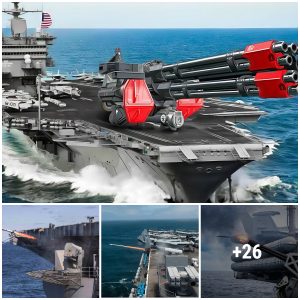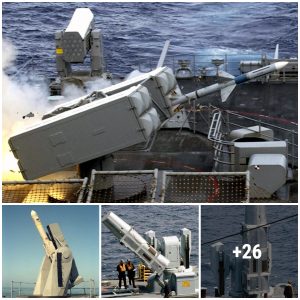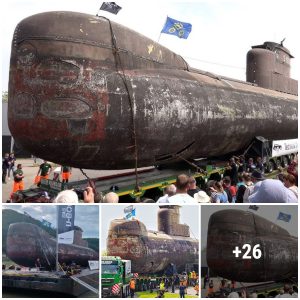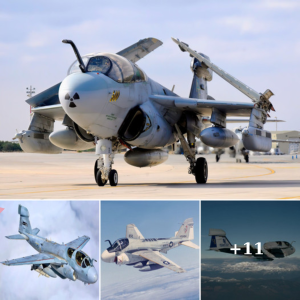Top Gun Maverick which released in theatres in the United States on May 27 remains the most hotly anticipated military themed English language film produced in over a decade, and as a sequel to the best selling Top Gun blockbuster that released 36 years prior in 1986 it was similarly significantly influenced and supported by the Pentagon. Following the lives of elite aviators from the U.S. Navy, a key aspect of the film was the expertly put together footage of fighter aircraft performing training, strike missions and air to air combat. Alongside the appearance in the opening scenes of the fictitious ‘Darkstar’ naval fighter – a Mach 10 manned in atmosphere prototype unlike anything likely to fly this decade – four classes of real world fighters appeared in Top Gun Maverick with the choice of aircraft used in some cases reflecting their real world roles and capabilities. A look at these four is given below:
F-18F Super HornetF-18E/F Super Hornet
The primary fighter used by the film’s protagonists, both in training and for their combat mission to destroy the nuclear facility of a targeted ‘rogue state,’ the F-18E/F today forms almost without exception all of the Navy’s operational carrier based units. The aircraft was for several years the only fourth generation fighter on order by the Pentagon, with the F-16 and previously the F-15 being produced exclusively for export, with its success being in part a result of very serious delays developing its successor the F-35C – and even greater delays bringing the F-35 to a fully operational capability. 32 squadrons of F-18E/F fighters are operational in the Navy, which alongside less than two squadrons of F-35Cs form its entire frontline fighter fleet. The Super Hornet was popular with the Navy after the end of the Cold War for its relatively low operational costs and maintenance needs, particularly compared to the much larger F-14 and the cancelled A-12 attack jet, which led it to replace all fighter classes previously deployed from carriers for a less specialised but much cheaper Super Hornet air wing.
The F-18F airframe was also used as the basis for developing the EA-18G Growler electronic attack jet, of which 13 squadrons are currently operational. Alongside two Super Hornets training units and one reserve unit, these bring the total Super Hornet and Growler fleet to 48 – or 768 airframes. No other airframe is so widely used by a single service anywhere in the world. The aircraft’s low cost has come at a price, however, with its short range in particular widely criticised as having sharply cut the area each carrier can control to a fraction of its size when F-14s were in operation – even excluding the fact that the F-18s carry much smaller radars and shorter ranged missiles than the Tomcats. The impact on deep strike capabilities of the cancellation of the stealthy A-12 and retirement of its predecessors was more serious still, but following the collapse of the Soviet Union this was seen as acceptable.

The Su-57 was the primary antagonist of Top Gun Maverick, and while not called by name and referred to only as the enemy’s ‘fifth generation fighter’ there was very little doubt from the aircraft’s design that it was the Su-57 or a future derivative of the airframe. The fighters were based within range of the rogue state’s nuclear facility to provide air defence, and neutralising the airfield while avoiding clashes with the aircraft were key priorities while planning the mission – with it repeatedly emphasised that any clash between Super Hornets and the stealthy next generation fighters would end badly for the U.S. Navy. The use of the Su-57 by a ‘rogue state’ to guard its nuclear weapons program notably comes as Iran, on which the adversary in Top Gun is thought to be based, has long been considered a leading potential foreign client for the fighter alongside India, Algeria and Vietnam. A nod to the Su-57’s extreme manoeuvrability, widely considered the best in the world at low speeds, was given with the aircraft’s extreme manoeuvres during clashes with Navy pilots, with these air to air engagements forming the film’s primary action scenes. The Su-57 itself was initially expected to be operational in the Russian Air Force by 2015 and to have gained significant export orders by the end of the decade, although signifiant delays to the program mean Russia itself has yet to field a full squadron. The possibility of sales to Iran and other potential targets for future American attacks nevertheless remains, while tensions surrounding the Iranian nuclear program have been high since Washington’s 2018 withdrawal from the Joint Comprehensive Plan of Action nuclear deal – under which Tehran had strictly restricted its program and allowed international inspections.
Iranian Air Force F-14F-14 Tomcat
The star of the original 1986 Top Gun film, and widely considered the most iconic American fighter ever to fly, the F-14 played a key role in Top Gun and was flown in the majority of air to air engagements. The F-14 was retired from the Navy in 2006, and reflecting this it was flown by the film’s protagonists Maverick, played by Tom Cruise, and his wingman Rooster only after their F-18s were shot down, forcing them to steal the aircraft from an enemy airfield. This mirrors the F-14’s actual status, with the fighter being operated only by the Iranian Air Force which was the only country both given permission to make purchases and willing to finance the fighter’s tremendous operational costs. The F-14 was prized for its beyond visual range air to air capabilities, which were totally unrivalled during the Cold War, although as is common for films based on fighter aviation all engagements took place within visual range. The F-14A currently operated by Iran, although modernised significantly domestically, is not particularly manoeuvrable, neither were the F-14A and B variants operational in the Navy when the original Top Gun film was produced, although the F-14D variant which served from 1991 to 2006 had a far better flight performance using F110-400 engines. Upgrades of the F-14A with these engines also took place, but only from 1987. The F-14’s involvement in Top Gun: Maverick, well received due to its status despite being retired, was teased from the film’s earliest trailers in 2019.

The F-35C joined the U.S. Navy in 2019, shortly before the first Top Gun trailers released, and played a prominent role in the opening scene showing fighters taking off from a Nimitz Class supercarrier before the audience were introduced to any of the characters. Beyond that, the fighter was mentioned during planning for operations against the targeted ‘rogue state,’ in the context that the use of ‘GPS jammers’ by the adversary would prevent the fighters from playing a role in operations. This mirrors the reality of the current state of the F-35 program, since the fighter although in service has very limited combat applications, poor availability rates, as it is still limited to an initial operating capability. Unsuitable for high or medium intensity missions, and still suffering from close to 800 performance defects, the aircraft is not expected to be fully combat ready until at least the late 2020s, with the Pentagon accordingly refusing to approve it for full scale production. This remains the case for all three variants of the F-35. Although the fighter has considerable potential, and like the Super Hornet was developed as a low cost option with just a single engine, relatively short range and limited flight performance, it is expected to be many years before it is ready for missions where it may confront integrated air defence networks or enemy fifth generation fighters.






